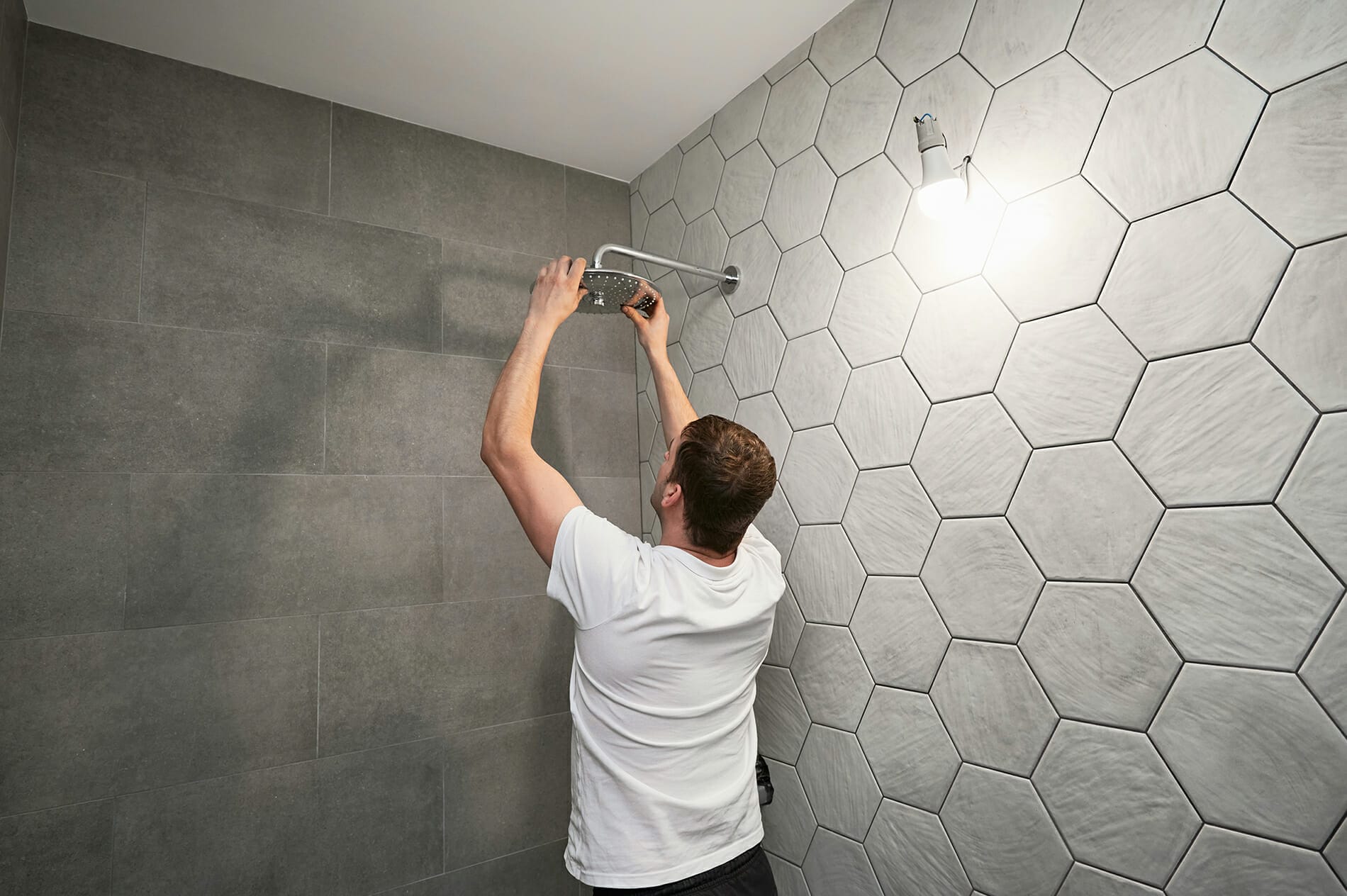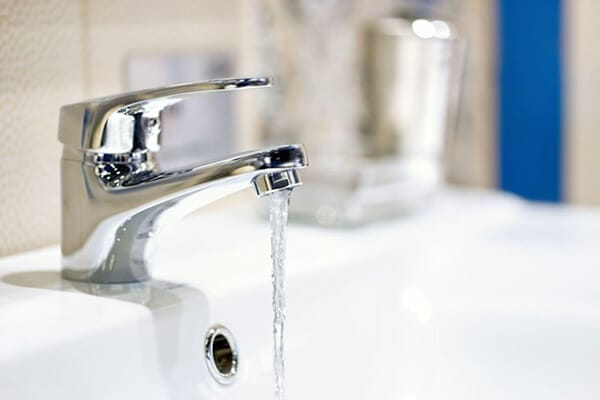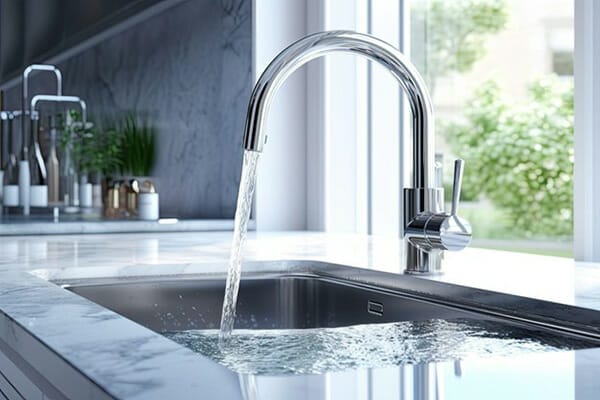Over the years, many products have come onto the market to help reduce our natural resource consumption and our negative impact on the environment. From the arrival of Energy Star-rated electronics to hybrid and electric vehicles, they all can make a positive impact. Two of these products that help conserve water are low-flow showerheads and faucet aerators.
What exactly are low-flow showerheads and faucet aerators, and how do they work? We’ll cover that and explain just how much water they can save and their other benefits, as well as their drawbacks and how to know if your home is already equipped with them.
Do Low-Flow Showerheads Save Water?
Yes, low-flow showerheads can indeed save water. Before these showerheads arrived on the market, most showerheads used five to eight gallons per minute (GPM) of water. So, even if you took a quick five-minute shower, you’d use a whopping 25 to 45 gallons of water.
These new water-saving showerheads adhere to a standard of 2.5 GPM flow rate at most, meaning they use only 2.5 gallons of water per minute or less. That’s up to 68.7% water savings.
Now, multiply that by the number of people in your home and the length of their showers, and you’ll really see the water savings add up.
How Do Low-Flow Showerheads Work?
Great, a low-flow showerhead can save water, but how do these showerheads slow water use? Two types of low-flow showerheads exist — aerating and laminar — and they work differently.
An aerating showerhead mixes air into the water to boost its density, delivering ample pressure and volume to cover a wide area while using less water than standard-flow showerheads. The downside to this is it tends to create a lot of steam.
A laminar showerhead breaks a larger water stream into multiple smaller streams to cover more area and deliver sufficient pressure while consuming less water. The benefit is that it produces less steam than an aerating showerhead.
How Much Do Low-Flow Showerheads Cost?
Showerheads can range greatly in price, especially when you look at some of the premium models. These upscale showerheads can cost thousands of dollars. However, there’s no need to break the bank when buying a simple low-flow showerhead, as you can typically pick up one for as little as $30 to $40.
And with a little mechanical aptitude, some thread tape to create a water-tight seal, and basic hand tools, you can install a low-flow showerhead yourself.
Enter your ZIP Code and compare electricity rates
Do Faucet Aerators Reduce Water Flow?
Like low-flow showerheads, faucet aerators also limit water flow, helping to conserve water. Most standard low-flow faucet aerators limit water flow to 2.2 GPM. However, you can get even lower-flow aerators for your sink faucet with a flow rate of 1 to 0.5 GPM. This can dramatically reduce the amount of water you use.
Plus, because faucet aerators are interchangeable, you can modify each sink faucet to fit its purpose. For example, for your kitchen faucet, where you’ll fill pots with water, it makes sense to install a higher-flow aerator so that’ll take less time. However, a low-flow aerator will work well in the bathroom, where you’ll usually just be brushing your teeth and washing your hands.
How Much Do Faucet Aerators Cost?
While low-flow showerheads are full units, a faucet aerator is a small attachment that goes inside or on the end of a faucet. This means they’re generally less expensive than a full showerhead.
Depending on the size and type of faucet aerator you need, they generally run from $3 to $8 at a local hardware store. Like a showerhead, you can also install the aerator yourself with basic tools and about 45 minutes, saving you on labor costs.
How Much Water Can You Save With a Faucet Aerator?
According to the U.S. Environmental Protection Agency (EPA), you can save up to 30% on your water usage by switching from a standard-flow 2.2 GPM aerator to a WaterSense-labeled one, which has a maximum 1.5 GPM water flow. This translates to a savings of 700 gallons of water annually.
What Are the Benefits of a Low-Flow Showerhead or Aerator?
You can reap many benefits by switching to a low-flow showerhead. Here are some of the most important ones to keep in mind.
Reduced Water Waste
Of course, the primary benefit of low-flow showerheads or aerators is reduced water waste. With today’s standard low-flow showerhead delivering the maximum-allowed water flow of 2.5 GPM, you can use about 25 gallons of water in a 10-minute shower. If you have an older showerhead that allows 3.5 GPM or higher, you’ll use at least an extra 10 gallons of water during your shower.
By switching to an even lower-flow showerhead with a rate of 1.8 GPM, you’ll use only 18 gallons of water in the same 10-minute shower. That’s 28% water savings compared to a standard low-flow showerhead. With climate change causing droughts and leading to water insecurity around the world, this water conservation can make a big difference if more people make the switch.
Lower Water Bill
Reduced water consumption can also help your pocketbook, as less water use means a lower water bill. This is because your water company charges you by the gallon. Since you’re using less water, your water bill will likely decrease.
Energy Savings
One benefit of low-flow showerheads and faucet aerators that’s easy to overlook is the energy savings of switching to a low-flow showerhead. Because these showerheads use less water, they’ll also drain your water heater slower. By using less hot water, the hot water heater works less, reducing your energy use and potentially lowering your electric or gas bill.
What Are the Disadvantages of a Low-Flow Showerhead or Aerator?
While low-flow showerheads and aerators have plenty of benefits, they also have some disadvantages. Here are a few to keep in mind when considering a lower-flow showerhead or aerator.
Low Water Pressure
Low-flow showerheads and aerators are designed to deliver water pressure close to higher-flow ones, but not all are created equally. In some cases, you may find the water pressure from the low-consumption fixtures too low for your liking. It may take trying several options before finding one that delivers the water pressure you like.
Clogging
Over time, mineral deposits can clog the small holes in low-flow showerheads and faucet aerators, leading to a slow or uneven water flow. This is especially true in areas where there’s a lot of construction that leads to even more debris than normal in the water lines. Fortunately, you can easily unclog a low-flow showerhead or faucet aerator and restore the water flow in just a few minutes by removing it and rinsing out any debris.
Do I Need a Low-Flow Showerhead or Aerator?
If your home doesn’t already have low-flow showerheads and aerators installed, it’s a great idea to do so. They not only can help reduce your water bill and energy usage, but they also help conserve water in times when droughts lead to shortages of fresh water.
But maybe there’s nothing you need to do. How would you know if you already have low-flow showerheads and aerators installed?
It’s easy to check your faucets: The GPM flow rate will be etched or stamped onto the side of a faucet aerator. This etching is sometimes even visible without removing the aerator from the faucet. However, if your faucet has a plastic aerator cartridge inside it, you may need to unscrew the cap from the end of the faucet and remove the plastic aerator cartridge to identify its GPM.
If it has a water flow of over 2.2 GPM, you’ll want to replace it with a lower-flow aerator, but keep in mind the intended use of that faucet. If it’s in the kitchen sink, where you’ll fill pots and pans with water, you may want to stick to a 2.2 GPM, but a lower-flow aerator will likely be fine for a bathroom sink.
If your faucet has no aerator, nothing restricts the water flow, and you’re likely wasting a lot of water. Check for threads on the end of the faucet. If it has threads, you can purchase the appropriate aerator and score it into place. If there are no threads, you may need to update the entire fixture.
If you’re checking your showerhead for its water flow rate, first look for any markings on the head that state its GPM. If it’s over 2.5 GPM, you have a high-flow showerhead and would benefit from installing a low-flow showerhead.
If it has no markings, find a bucket or container with a 1-gallon mark on it, turn the cold water on full blast, and start filling the container. You have a high-flow showerhead if the water reaches the 1-gallon mark in 20 seconds or less. If it takes more than 20 seconds, you have a low-flow showerhead.
Low-Flow Showerheads and Faucet Aerators Help You Become More Eco-Friendly
Becoming more eco-friendly has many components, and one of them is water conservation. When you conserve fresh water, you help ensure there’s plenty of drinking water for everyone and plenty of water for marine life.
By installing low-flow showerheads and faucet aerators in your home, you can take a big step toward lowering your water consumption — not to mention your water bill — and increasing your eco-friendliness.
You can also increase your eco-friendliness when you reconsider your electricity usage by leveraging Texas’ deregulated energy market. Through this market, you can choose an electricity provider that focuses on green and renewable energy, further reducing your environmental footprint.
Plus, like switching to a low-flow showerhead or faucet aerator, you can also save money in this deregulated market by choosing a provider with better rates. Energy Savings can help with this switch. Check out all our available energy plans in your area today.
Brought to you by energysavings.com
All images licensed from Adobe Stock.




